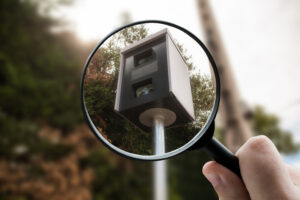Automated enforcement won’t kill you but speed will.
Have you ever arrived late to a meeting, a birthday, or a movie knowing full well you were late? Did you slide casually into the back of a room or blend into a group, pretending you were there all along, desperately hoping no one noticed?
Even if no one sees you, most of us still feel that combined glimmer of guilt and sigh of relief when we get away with it. This is because we know we should have planned better, done better to be on time. We may even chastise ourselves and commit to leave earlier the next time.
Why speed?
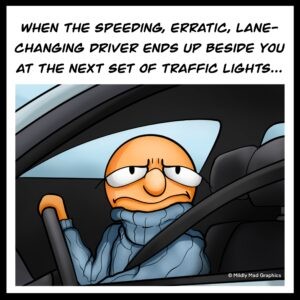 Speeding, and our reasons for doing it, aren’t really all that different. We committed to be some place, do some thing at a given time, but didn’t plan accordingly for whatever reason. Speeding is the attempt to avoid consequences, real or perceived, hoping to still slide back to the designated speed limit, unnoticed, without getting caught, while breathing a sigh of relief.
Speeding, and our reasons for doing it, aren’t really all that different. We committed to be some place, do some thing at a given time, but didn’t plan accordingly for whatever reason. Speeding is the attempt to avoid consequences, real or perceived, hoping to still slide back to the designated speed limit, unnoticed, without getting caught, while breathing a sigh of relief.
Or it may be that speeding just feels fun in the moment or gives us a sense of control over that annoying driver on the road. People believe their driving skills will save them; that they are such a good driver they won’t crash. They’ll tell you with pride…I’ve never been in one…the single word yet hanging quietly in the air.
Irrespective of the reason for speeding, there is still the sense of relief as you ease back to the limit. You are thankful you weren’t detected as you flew around that corner, past that school at lunchtime, or through that intersection, on a yellow no less. You weren’t stopped; weren’t caught. You believe you got away with it.
But did you?
If you have to wonder, the answer is no.
Every other driver, cyclist, rider, pedestrian and general bystander on the road did, in fact, see you.
They noticed because you put their lives, their loved ones, and their community at risk. They are unwilling witnesses to your dangerous behaviour.
Balancing the scales of justice
So why do ardent critics of automated speed enforcement believe cameras are unfair, or worse, illegitimate? Why do they believe speeding tickets are valid only if a police officer actually observes a driver speeding in person?

Now let’s imagine for a moment that a different law of the land exists, where offenders can’t be prosecuted if a designated authority like a police officer didn’t actually catch you red-handed. The observations by bystanders or victims, pictures of the crime, evidence of injuries or damage caused are all irrelevant. Sanctions simply cannot be imposed. There is no proof.
In other words, there are no crimes unless a police officer catches you in the act. No thefts, no assaults, no murders. And no tickets from automated speed enforcement cameras.
Sounds ridiculous, right? Just imagine if digital evidence was thrown out the window altogether, because it wasn’t considered valid, or enough. No pictures of the crime or crime scene, no crash analysis or reconstruction showing speed was a factor, no expert witnesses backed up by science and data. Officers simply wouldn’t be able to lay charges if they didn’t observe the crime first-hand.
Can we really ignore evidence in the digital age
But today, digital evidence is commonplace and even ingrained in our society. At the most basic level, let’s consider the dreaded late fees. We’ve all paid at some point for missed bill or credit card payments, for not paying taxes by the dealine, even for not returning a library book (you remember libraries right; the internet in paper form).
No one saw you be late. But there is digital evidence in the form of a timestamp that you were. Have you ever argued with a service or account representative about the validity of a late fee?
Spoiler alert…it doesn’t matter if no one literally saw you submit your payment late. Rules are rules.
Then there is late homework, assignments slid into a pile on the teacher’s desk when no one is looking. Marks are (or at least for us Gen-Xers they were) routinely deducted. And believe me when I say parents were not coming down to back up our excuses or argue our case for us. All we got was I hope you learned your lesson, followed by a Don’t let it happen again…from our parents.
If my point is still not yet clear, I’ll spell it out. Society has long-since evolved past the belief that the only tangible evidence a crime has occurred comes from first-hand, credible eye-witness testimony.
We haven’t relied on such nonsense since the Salem Witch Trials (what can I say, it’s almost Halloween).
Automated speed enforcement IS effective
So, why the strong opposition to automated speed enforcement? There is clear and convincing evidence it works. In fact, it’s existed for decades.
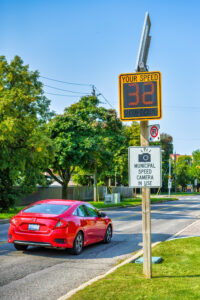
- Near schools: 87%
- Near playgrounds: 85%
- Near hospitals: 77%
- Near parks: 76%
- Near seniors’ residences: 76%
- On any road where there is speeding: 65%
Among those who reported receiving a ticket (14% of respondents), 79% said it modified their behaviour, including 65% who said they reduced speed in most driving situations.
Evidence of deaths on our roads is equally compelling. Speeding remains a priority road safety issue in Canada. Transport Canada data (2023) revealed one in four fatal crashes of the 1,630 fatal crashes in 2021, involved a driver speeding or driving too fast for conditions.
More concerning, roughly seven out of 10 Canadians admitted speeding by 20 to 30 km/h over the limit on highways at least occasionally, and 11% reported speeding by more than 30 km/h in a survey of Canadian drivers in 2023 conducted by the Traffic Injury Research Foundation (TIRF). In addition, 91% of drivers reported at least occasionally seeing other drivers speeding, 13% reported having a near-crash experience due to speeding in the previous 3 months, and 2% reported having a speeding-related crash in the previous 3 months.
The real question we all need to consider as part of the automated speed enforcement debate, and every time we get behind the wheel, is simple: What kind of world do you and your children want to live in?
Living in a safe world is worth the cost of automated enforcement

Remember that twinge of guilt; that sigh of relief when you avoid getting caught? You feel it because you know it’s wrong, it’s dangerous, and there are laws against speeding for a reason. Speeding is akin to Russian Roulette. Ultimately, people are guaranteed to be hurt; we just don’t know when it will happen, or to whom. Someone somewhere pays the price for speeding and if it’s not happened to you or someone you know, don’t forget the word …yet biding its time, echoing in the silence.
Supporting automated speed enforcement reflects a willingness to trade that momentary thrill of getting away with it to achieve a better, safer world. Does it mean we are more likely to be caught? Yes. But more importantly, it means we are less likely to do it in the first place.
#MySafeRoadHome blog co-authors: Robyn Robertson, TIRF President & CEO and Craig Lyon, Director, Road Safety Engineering, work collaboratively as co-authors. Robyn is the author of TIRF’s knowledge translation model, is well-versed in implementation strategies and operational practices across several sectors. Craig is a senior research scientist with a background in transportation engineering focusing on road safety. Craig’s research interests are in the application of statistical analysis methods to understand the effects of the roadway, drivers and administrative policies on road safety.
Related topics:
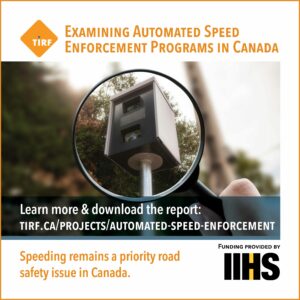 |
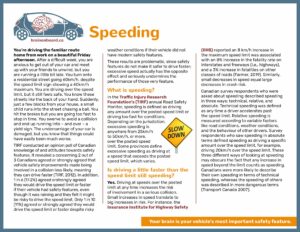 |
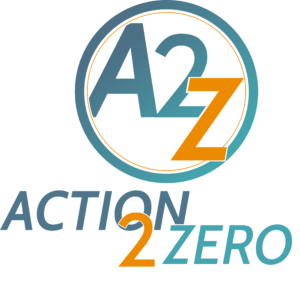 |
 |
Source documents and resources:
The Role of Speeding in Road Crashes, Traffic Injury Research Foundation, October 2020 https://tirf.ca/download/role-speeding-road-crashes/
Transport Canada. (2023, April 13). Canadian motor vehicle traffic collision statistics: 2021 [web page]. https://tc.canada.ca/en/road-transportation/statistics-data/canadian-motor-vehicle-traffic-collision-statistics-2021
Lyon, C., Delavary, M., Cicchino, J., Hu, W., & Wolfe, D. (2024). Examining Automated Speed Enforcement Programs
